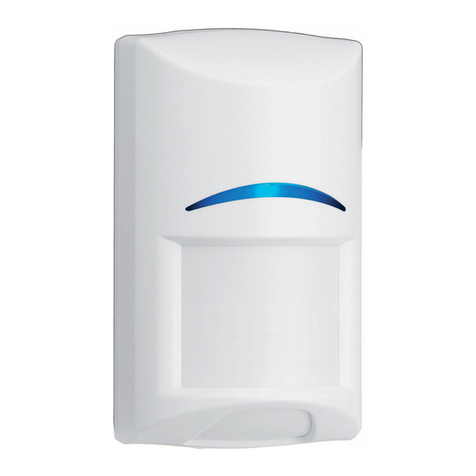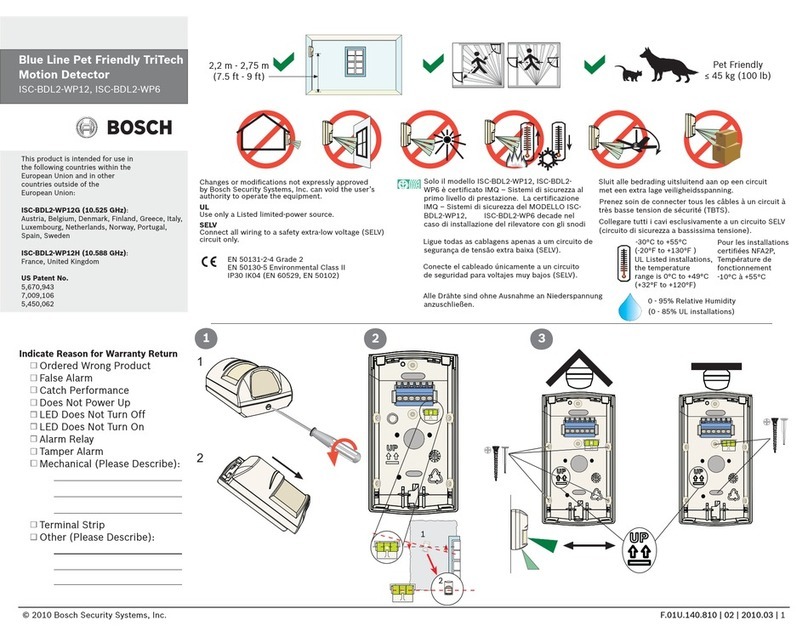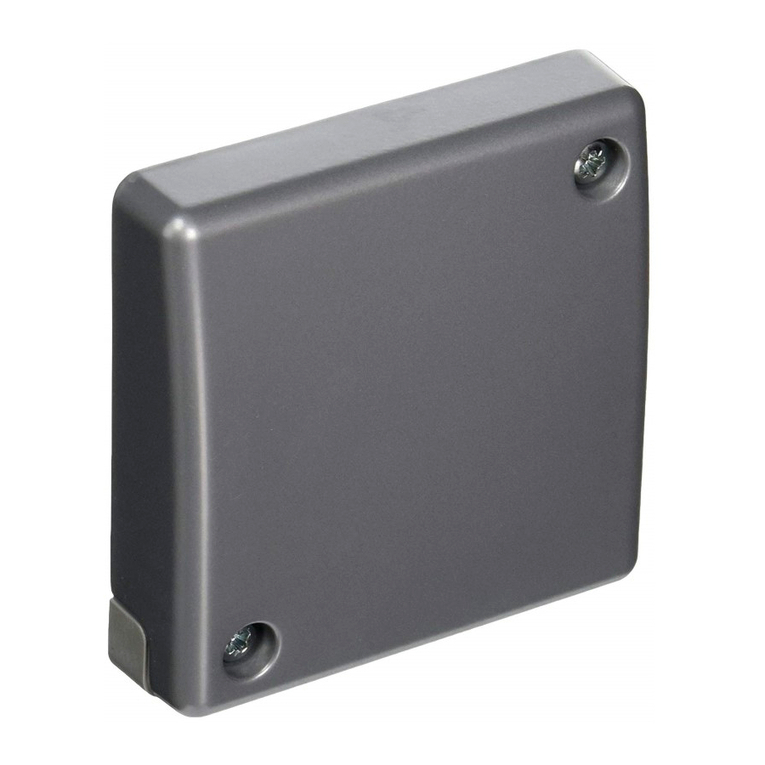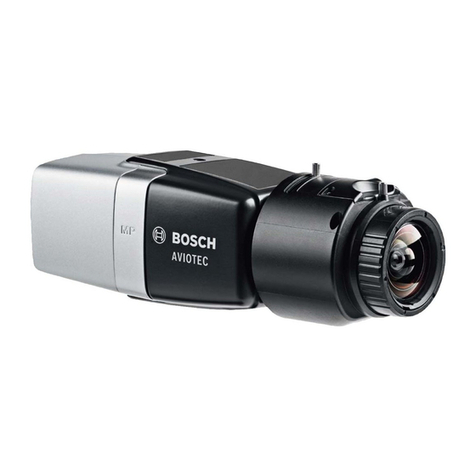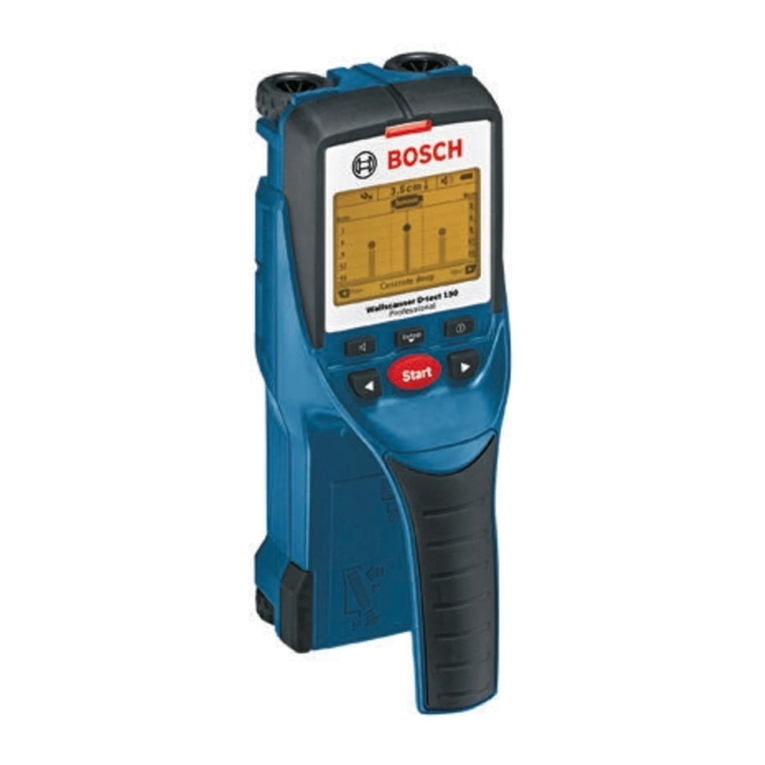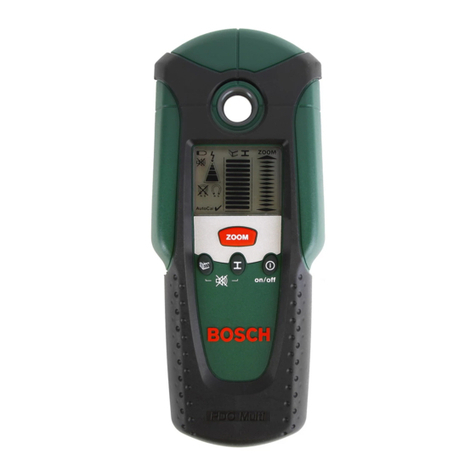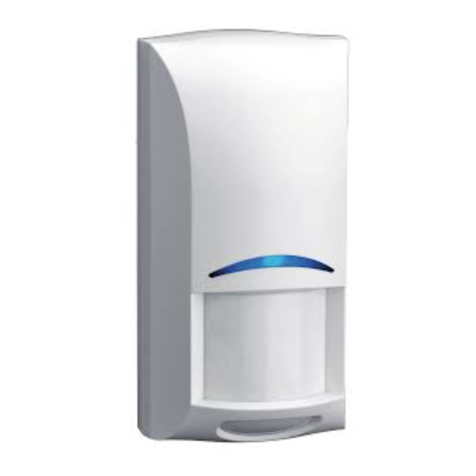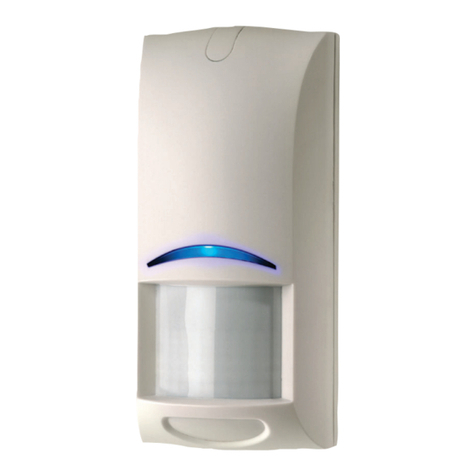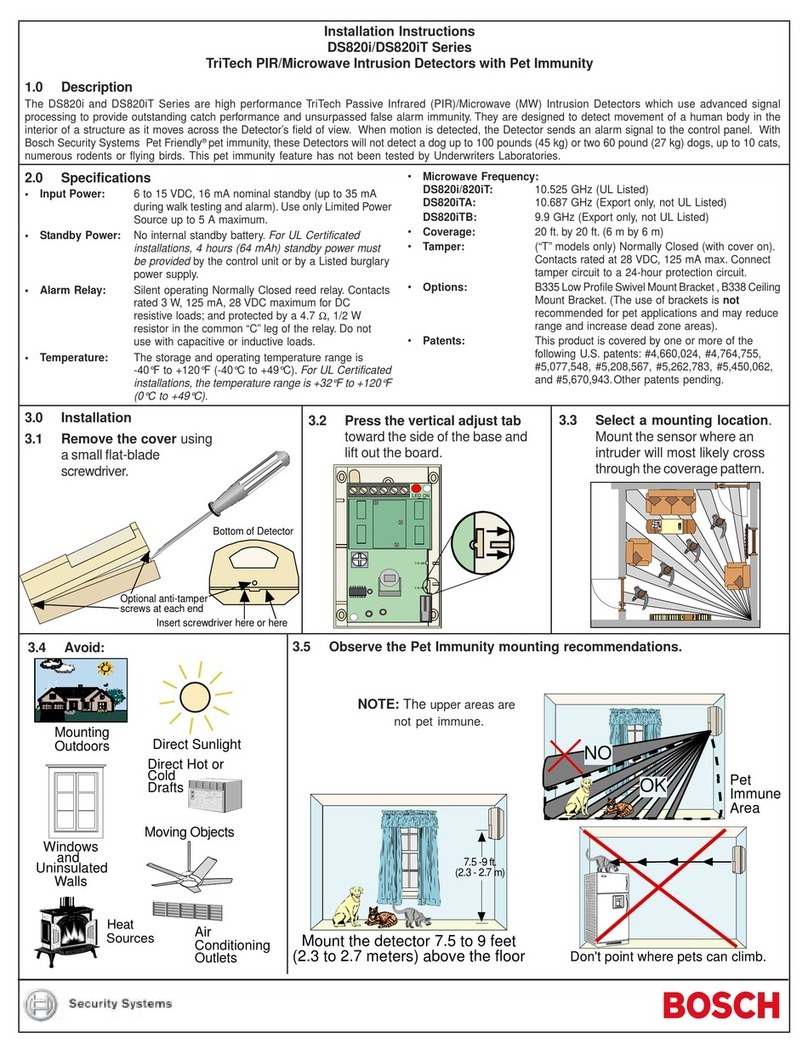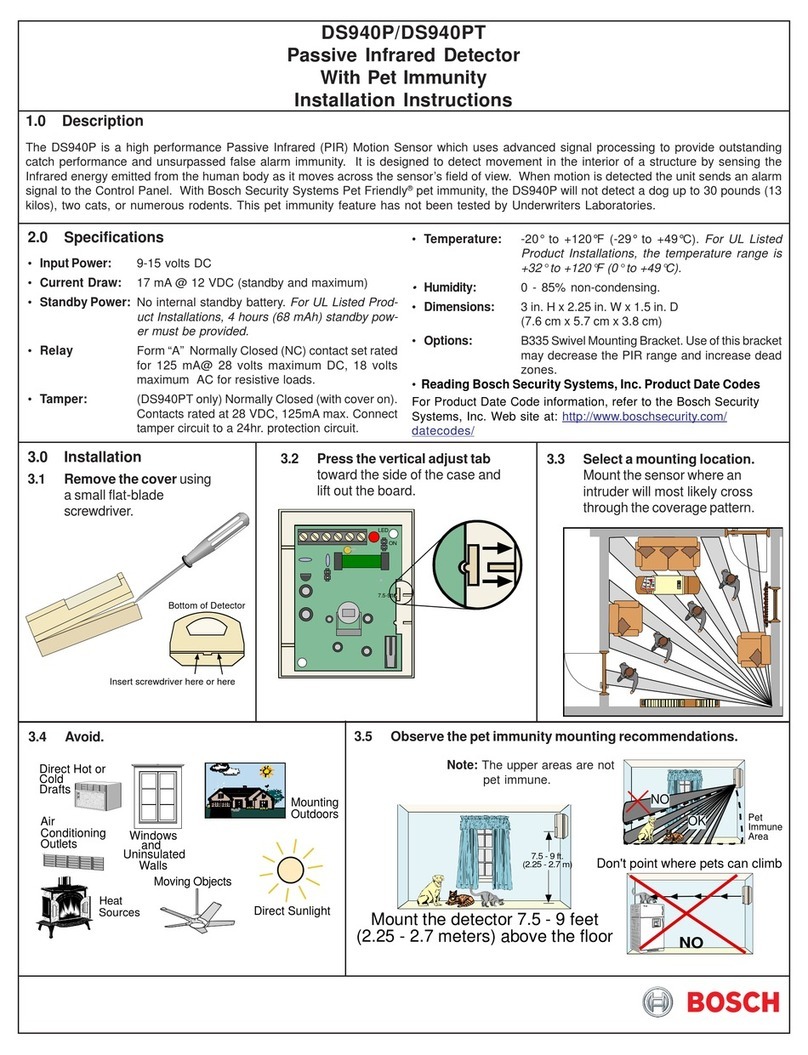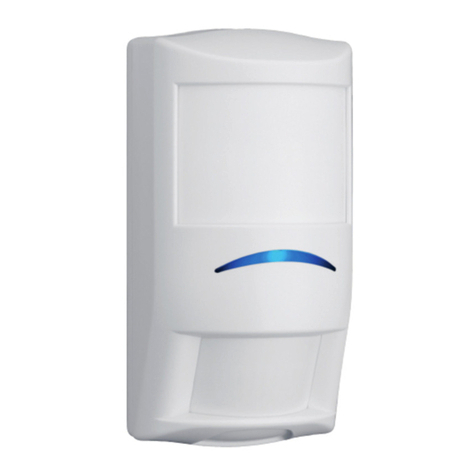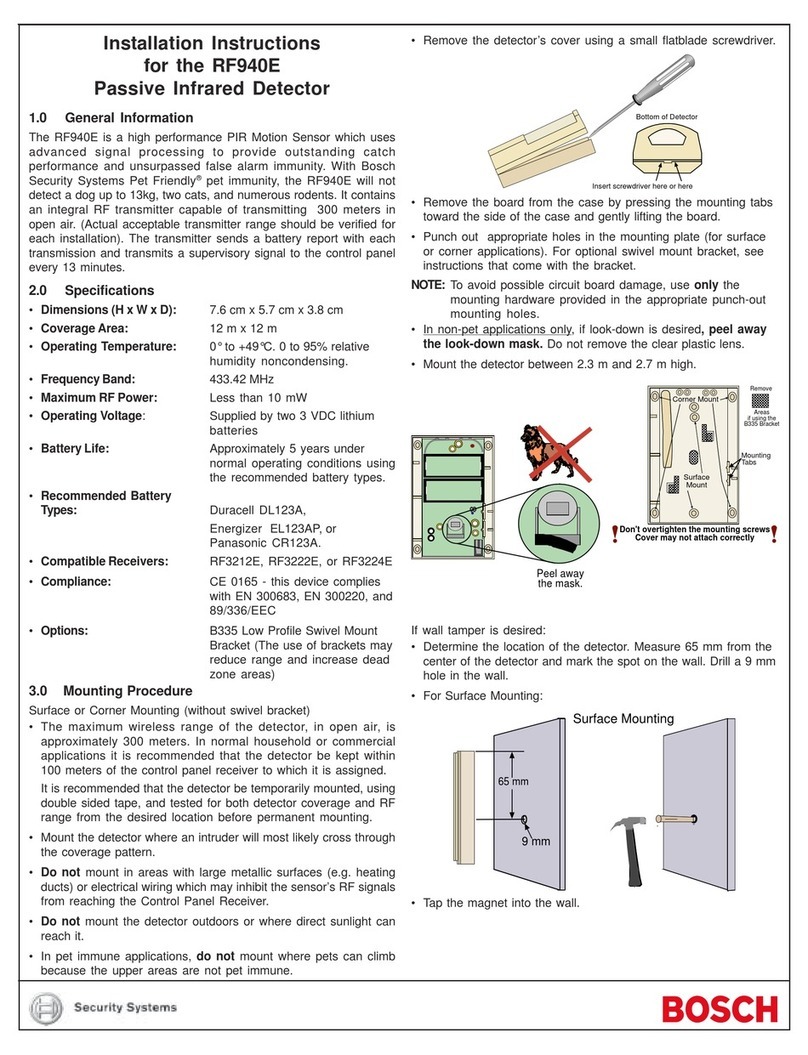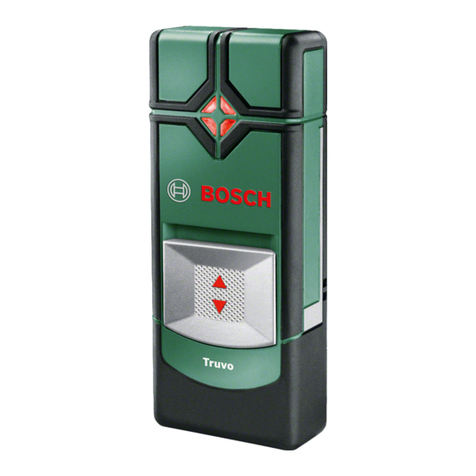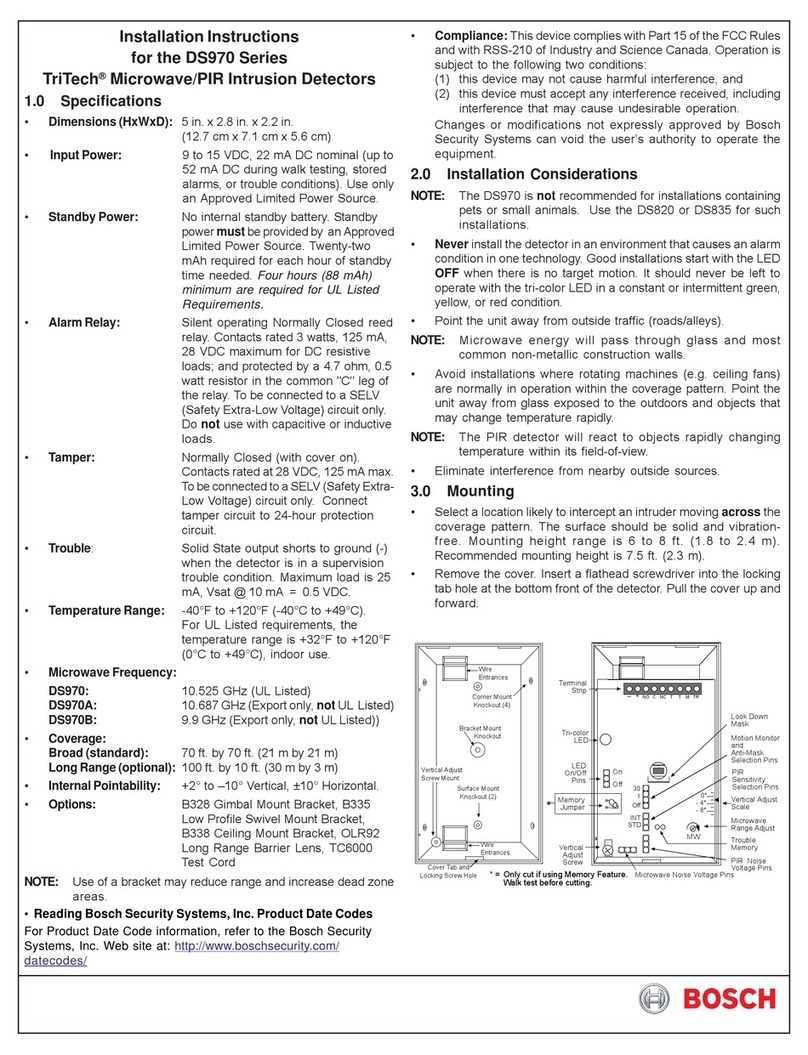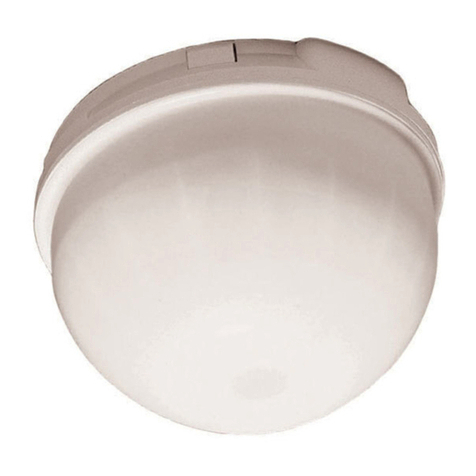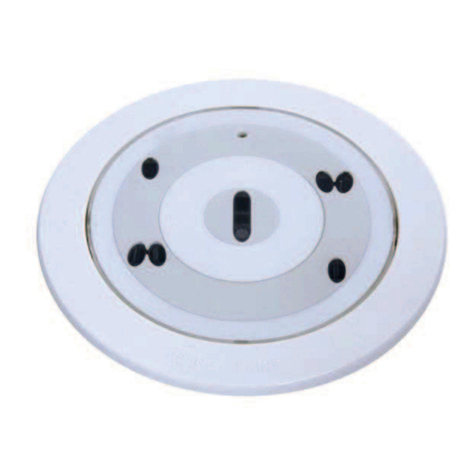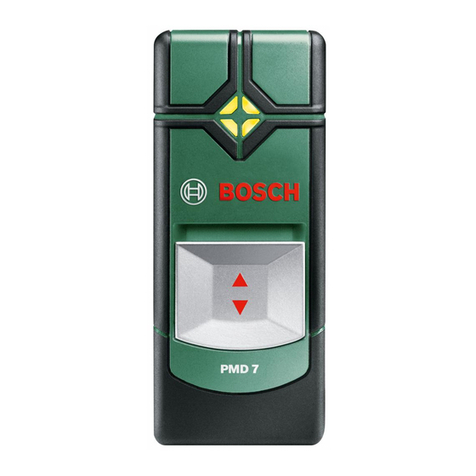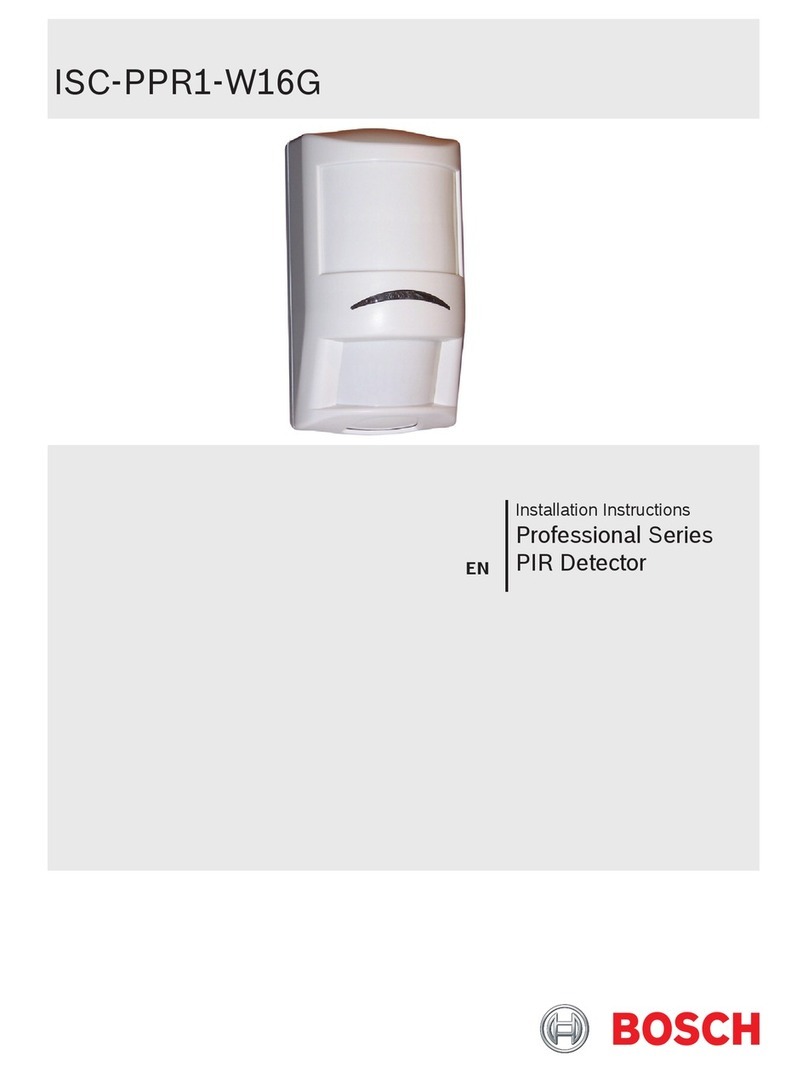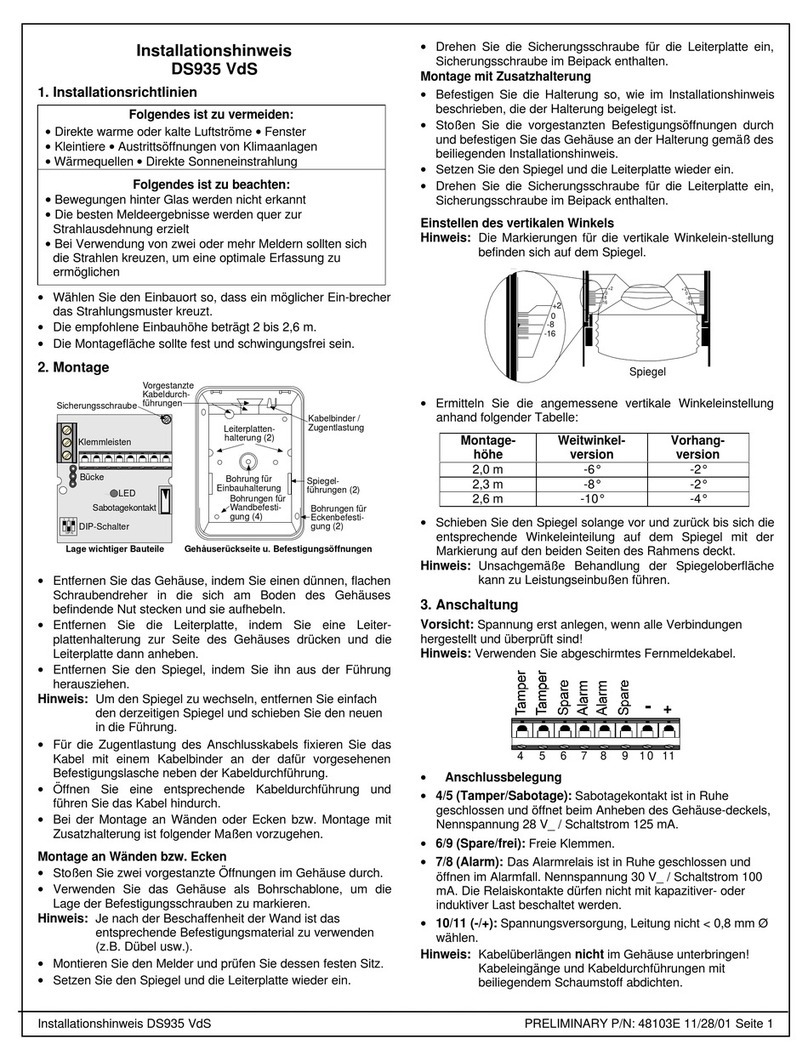
DS939 Ceiling Mount
PIR Intrusion Detector
1.0 Specifications
• Dimensions 3.5 in. x 7 in. (8.9 cm x 17.8 cm)
(HxDia):
•Coverage: 360° by 70 ft. (21 m) diameter coverage when
mounted on 12 to 25 ft. (3.7 to 7.6 m) high ceilings. A
coverage area of 40 ft. (12 m) is available when
mounted at 8 ft. (2.4 m) and a coverage of 50 ft.
(15 m) is available when mounted at 10 ft. (3 m). The
pattern consists of 69 zones grouped into 21 barriers.
Each barrier is 35 ft. (10.7 m) long and 5 ft. (1.5 m)
wide at 35 ft. (10.7 m). The barriers are divided into 3
groups of 7 barriers, each of which has a vertical
adjustment for custom coverage.
•Input 9.0 to 15.0 VDC; 22 mA standby, 39 mA in alarm with
Power: LEDs enabled. Use only a Listed Limited Power
Source.
•Standby There is no internal standby battery. 22 mAh is
Power: required for each hour of standby time needed.
For UL
Listed Requirements, four hours of standby current
(88 mAh) is required.
Standby power must be
provided by a Listed Limited Power Source.
• Sensitivity: Low/High settings.
•Alarm Silent-operating Form “C” relay. Contacts rated 125
Relay: mA, 28 VDC, 3 watts maximum for DC resistive loads.
The contacts transfer on alarm for a period of 4
seconds. Some countries require the relay to be
connected to a SELV (Safety Extra-Low Voltage)
circuit only. Do not use with capacitive or inductive
loads.
•Tamper: Normally Closed (with cover in place) tamper switch.
A wall (base) tamper is included. Contacts rated at 28
VDC, 125 mA, 3 watts maximum. Some countries
require the switch to be connected to a SELV (Safety
Extra-Low Voltage) circuit only. Connect tamper circuit
to a 24-hour protection circuit.
•Temperature The storage and operating range is -40° to +120°F
Range: (-40° to +49°C).
For UL Listed Requirements, the
range is +32° to +120°F (0° to +49°C).
• US Patent This detector is protected by one or more of the
Numbers: following: #4,764,755. Other patents pending.
•Compliance: This device complies with Part 15 of the FCC Rules
and with RSS-210 of Industry and Science Canada.
Operation is subject to the following two conditions:
(1) this device may not cause harmful interference,
and
(2) this device must accept any interference
received, including interference that may cause
undesirable operation.
Changes or modifications not expressly approved by
Bosch Security Systems can void the user’s authority
to operate the equipment.
2.0 Installation Considerations
•Never install the detector in an environment that causes an alarm
condition. Good installations start with the LED OFF when there is no
target motion. It should never be left to operate with the LED in a
constant or intermittent alarm (red) condition.
• Avoid installations where rotating machines (e.g. ceiling fans) are
normally in operation within the coverage pattern. Point the unit away
from glass exposed to the outdoors and objects that may change
temperature rapidly.
Note: The PIR detector will react to objects rapidly changing temperature
within its field-of-view.
• For optimum detection, select a location likely to intercept an intruder
moving
across
the coverage pattern.
3.0 Mounting
• Recommended mounting height range is 12 to 25 feet (3.7 to 7.6 m). A
coverage area of 40-70 ft. (12.2-21.3 m) is available when mounted
between 8-12 ft. (2.4-3.7 m).
• The surface should be solid and vibration-free. (i.e. drop tiles should be
secured if the area above the tiles is used as an air return for HVAC
systems).
• To open the detector, locate the arrow on the cover of the detector .
Turn a screwdriver in the recess between the cover and the base .
One side of the cover will remain attached to the base of the detector.
